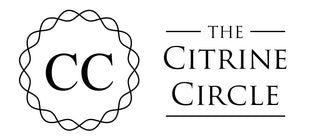The crystal, mineral and gem world is full of weird and wonderful words that you might not know at first glance. We're here to help de-mystify the jargon!
Adamantine - a description of Lustre with a super bright, sparkling appearance
Carat - a unit of weight measurement, usually used with gemstones. 1 Carat is equal to 0.2g
Cleavage - a minerals ability to break along flat surface/plane. When a mineral easily breaks and produces flat, smooth, lustrous surfaces, it is said to have perfect cleavage.
Conchoidal - describes the type of fracture that happens when a crystal has no cleavage and does not break in any sort of nice, even line. A conchoidal fracture leaves behind curved fractures, often described as shell like. Glass, Obsidian and Quartz (including Chalcedony/Jasper) all display conchoidal fracture.
Cryptocrystalline - this mineral/crystal has crystal structure that is too small to see with the naked eye, a microscope is needed. Also referred to as Microcrystalline.
Crystal - defined as any solid that has an organised, repeating internal structure. Opal and Obsidian do not have a repeating crystal structure so cannot technically be called crystals. Read in more detail here.
Crystal System - the classification system used to describe the shape of a crystal ie Hexagonal, Isometric
Double Terminated - a natural termination at both ends. Sometimes used to refer to polished crystals that have been cut and polished manually at both ends
Druzy - a covering of very small crystals, often Quartz, which gives the host crystal/rock a sparkly effect
Dull - a description of Lustre with a dull, unreflective appearance
Earthy - a description of Lustre with a dull, grainy appearance
Enhydro - usually refers to a very slightly porous Chalcedony which has had water seep in over a geologically long period of time. As the crystal is slightly porous, these geodes do sometimes dry out. Different to Fluid Inclusions seen in Quartz and other crystals, although they are commonly also referred to as Enhydros (though this is technically incorrect)
Faceted - usually refers to a gem that has been cut to have multiple faces which show off it's sparkle.
Feldspar - a large family of minerals that include Labradorite, Amazonite, Moonstone and many more. It is actually the most common mineral group on the surface of the Earth.
Fluid Inclusion - Similar to an Enhydro where liquid is trapped inside a crystal, but this is permanent unless the crystal is damaged, as it happens during the crystals formation. For more in detail discussion, see our article here.
Greasy - a description of Lustre with an oily appearance
Hackly - describes fractures with sharp jagged edges. Usually refers to metals.
Hardness - determines how easily the mineral/crystal can be scratched. Measured using the Mohs Scale.
Heat Treated - some crystals and gems are heated to either improve their colour, or change it altogether. Almost all Tanzanite is heated to bring out the bright blue/purple colour we know and love. Heat treating Amethyst burns the iron inside the crystal, and changes it to an orange yellow colour, which is then commonly sold as Citrine.
Inclusion - a different mineral that has grown inside a crystal. Common inclusions include Goethite in Amethyst, Hematite in Quartz etc
Inorganic - refers to crystals not of organic origin, Jet and Amber are both Organic
Internal Fractures - an internal fault in the crystal which often produces rainbows when viewed at certain angles. Can be formed naturally due to geological occurrences, or manmade due to being dropped etc.
Irradiated - although many crystals are altered due to natural radiation in the earth, some are also artificially altered by man to change the appearance of gems. Clear Quartz is often blasted with radiation to darken it and is then sold as Smoky Quartz.
Lustre - the appearance of a crystal, generally classified into Vitreous (like glass), Resinous (like resin), Dull (not reflective), Silky (sheen like appearance similar to satin or silk), Metallic (like reflections from metal), Greasy (like an oily surface), Adamantine (super bright like a diamond) or Earthy (dull and grainy)
Macrocrystalline - crystals are visible to the naked eye, no microscope required
Massive - a very fine grained crystal whose structure can only be seen under the microscope
Metallic - a description of Lustre with a reflective, metal like appearance
Microcrystalline - this mineral/crystal has crystal structure that is too small to see with the naked eye, a microscope is needed. Also referred to as Cryptocrystalline.
Mineral - a mineral by definition is a "naturally occurring, inorganic solid, with a definite chemical composition and ordered internal structure". For more detailed information, see here.
Mohs Scale - the scale used to determine the hardness of a mineral. Diamond is the hardest known at 10, and Talc is the softest at 1.
Native Element - these are minerals that are formed of a single element such as copper, gold, sulphur
Primary Mineral - minerals and crystals that crystallise directly from magma and remain unaltered.
Resinous - a description of Lustre with a soft, resin like appearance
Rock - a naturally occurring combination of two or more minerals. Read more in depth here.
Secondary Minerals - these form when a primary mineral is altered, such as when a copper mineral comes into contact with carbonated water and alters into Malachite or Azurite
Silky - a description of Lustre with a soft, sheen like appearance similar to that of silk or satin
Streak - refers to the colour of the powder that is left when a crystal/mineral is dragged along a surface, often an unglazed porcelain tile. The colour of a mineral is not always the same as it's streak.
Striations - natural lines in the side or face of a crystal
Tektite - a natural glass that is formed as a result of a meteorite impact, it is not a part of the meteorite itself.
Termination - the naturally formed end of a crystal, as opposed to a broken end
Vitreous - a description of Lustre with a glass like appearance
Vug - a small, irregular cavity in which pockets of crystals are often found

